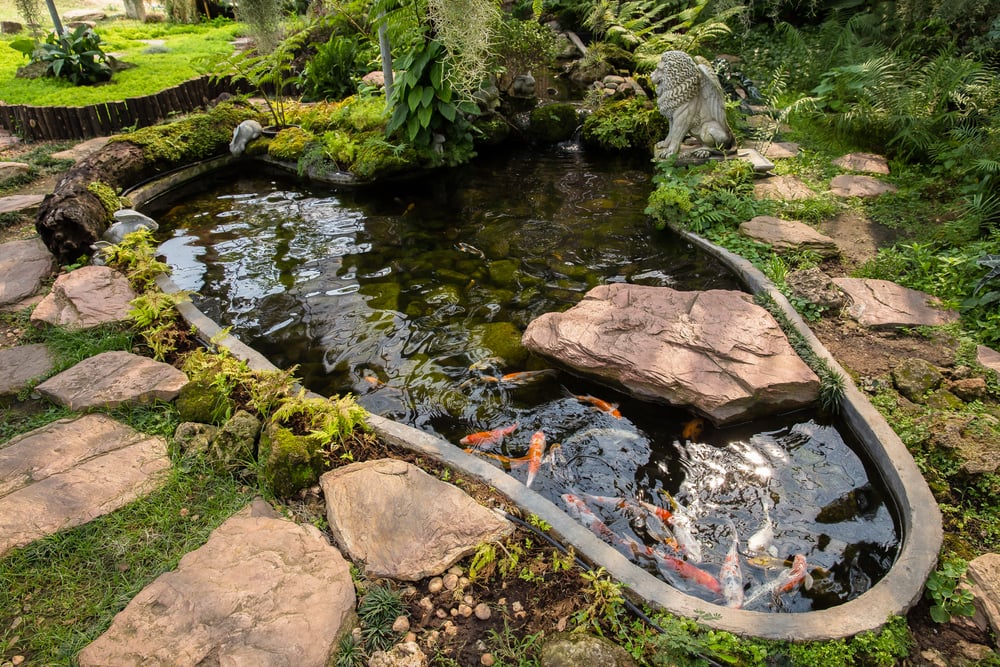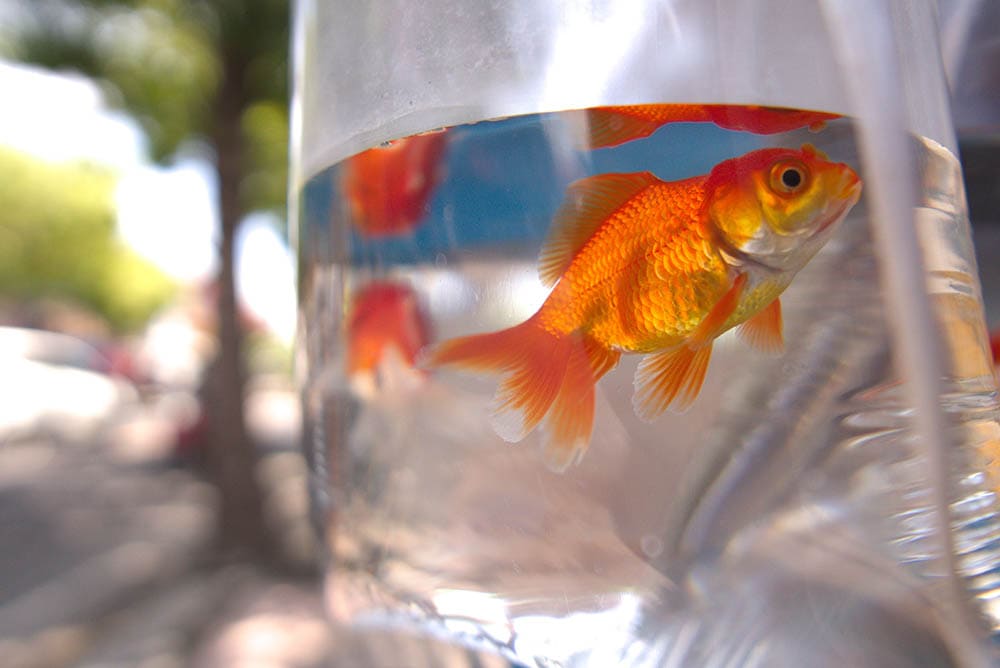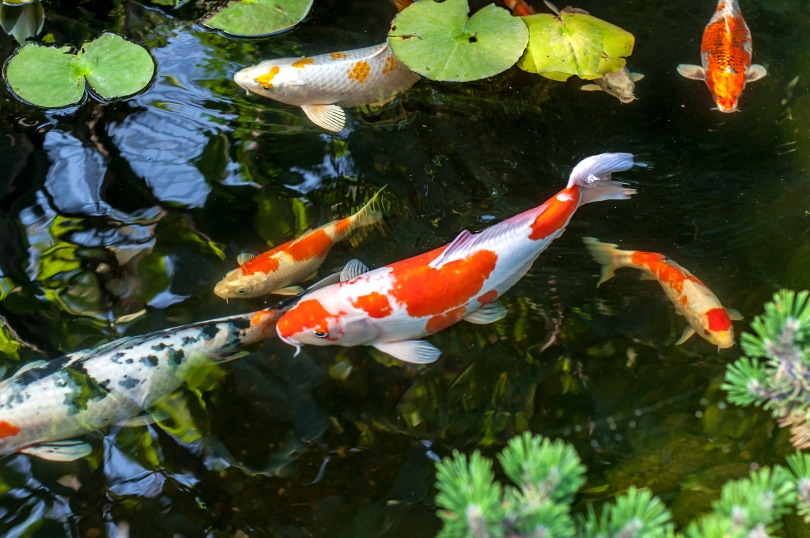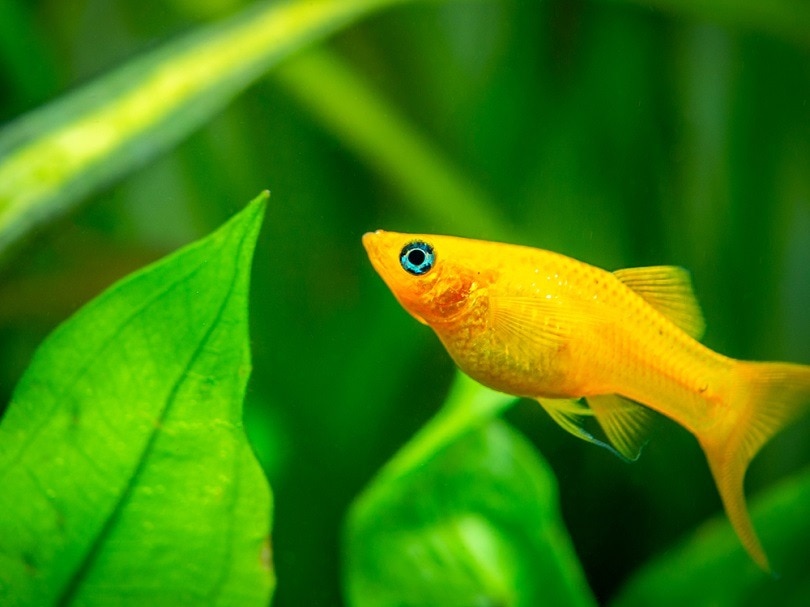
Click to Skip Ahead
The Molly is a common aquarium fish, and many people like this fish for its low-maintenance, hardy nature. Mollies are often underestimated, though! These fish can be quite charming and entertaining, and their ability to bear live young and reproduce readily can increase their appeal for some. Let’s talk about the humble, underestimated Molly fish!
Breed Overview
| Size: | 2 – 5 inches |
| Lifespan: | 3 – 5 years |
| Similar Breeds: | Guppies, Endlers, Platies |
| Suitable for: | Beginners |
| Temperament: | Social, adaptable, mildly aggressive (males) |
For anyone who’s ever been in a store that sells fish, Mollies are nothing new. They are one of the more common fish species you’ll find for home aquariums, and for good reason. They are easy to care for and fun to watch. They are prolific breeders, which is a bonus for some people who want a self-sustaining fish population. Mollies come in multiple varieties, with a selection of interesting fins and markings.
Molly Breed Characteristics
 Molly Fish Cost
Molly Fish Cost

If you’re simply looking for your average Molly or one of the more common specialty varieties of Molly fish, then you shouldn’t have any trouble finding them. They’re inexpensive fish as well, usually selling for around $2–$4 per fish, although you will need to purchase a group of them. They are shoaling fish, so they should be kept in a group of at least five fish.
Even if you’re in the market for a specialty Molly variety, you likely won’t have to break the bank to get a couple of fish. Specialty Mollies may retail for around $12–$15. Keep in mind, though, that you’ll still need a full shoal of fish, so five specialty Mollies can cost you upwards of $60.
Sociability of the Molly Fish
Do These Fish Make Good Pets?
Yes, Mollies can be quite fun to keep as pets. They are similar to Guppies in that they will interact with people through the glass, especially if they think they’re going to get fed. They are also pretty easy to care for, making them a great option for a first-time fishkeeper.
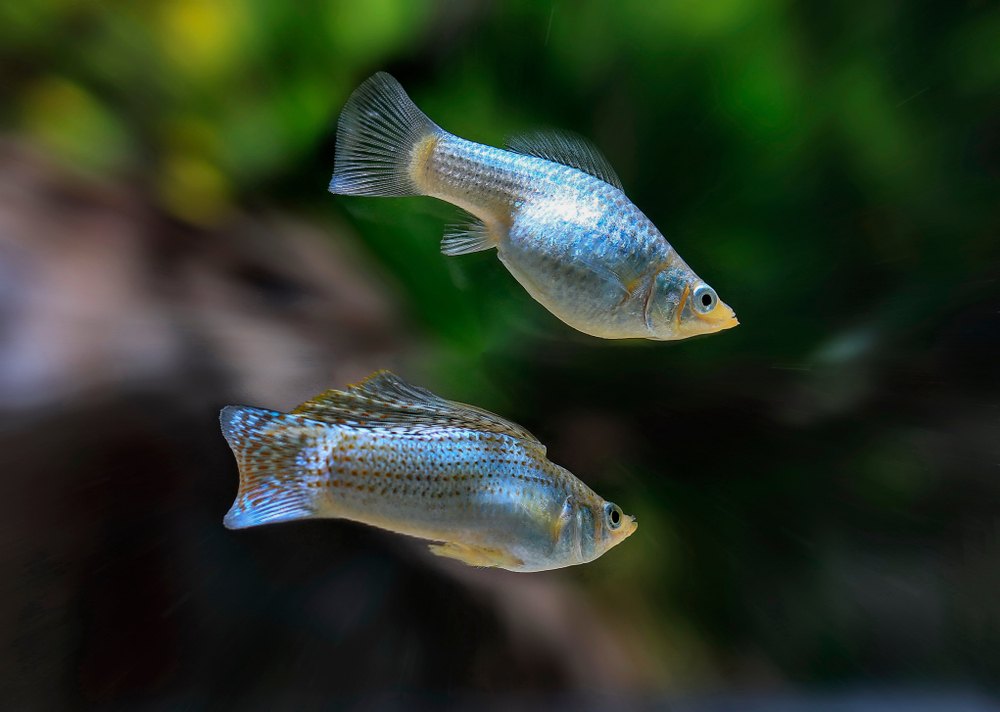
Does This Fish Make a Good Tankmate?
Yes, Mollies are good tankmates for most freshwater community fish. They are suitable for community tanks, but if you are keeping males and females together, you should expect them to reproduce rapidly. You may end up with more Mollies than you know what to do with, quickly overstocking your tank.
Male Mollies may become aggressive toward each other when they are interested in breeding with a female. There is a possibility of a male Molly showing aggression toward similar-looking tankmates of other species, like Platies and Guppies, but they are overall considered social, peaceful fish.
Care Guide & Tank Set Up
Water Quality, pH & Temperature
Like all fish, Mollies need high water quality. In low water quality, Mollies are susceptible to a variety of illnesses, so water parameters should be kept at nitrates below 20 ppm and zero ammonia or nitrites. They prefer a neutral to slightly alkaline tank, so the pH should be kept around 7.5–8.5.
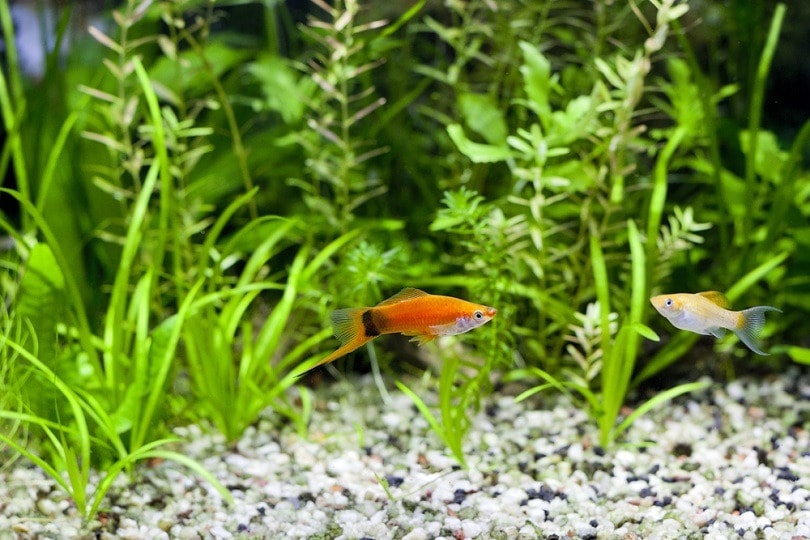
Substrate
Most inert substrates are suitable for Mollies, but you should avoid substrates that may lower the pH, leading to acidic water. They will sometimes scavenge on the bottom of the tank, but Mollies prefer to stay near the upper half of the water column, so the substrate doesn’t usually impact their daily life.
Plants
Most freshwater aquatic plants that can tolerate a slightly alkaline pH are suitable for a Molly’s tank. They are unlikely to uproot and eat live plants. Floating plants, especially those with dangling roots like water lettuce and red root floaters, can be a good addition to create cover for your Mollies and their newborn fry.
Lighting
Mollies require a regular day/night lighting cycle, so you should provide them with normal daylight for around 12–16 hours per day. Keep in mind that the more light you provide the tank, the greater the risk of algae growth. Lighting should be strong enough to maintain the needs of the live plants you choose.
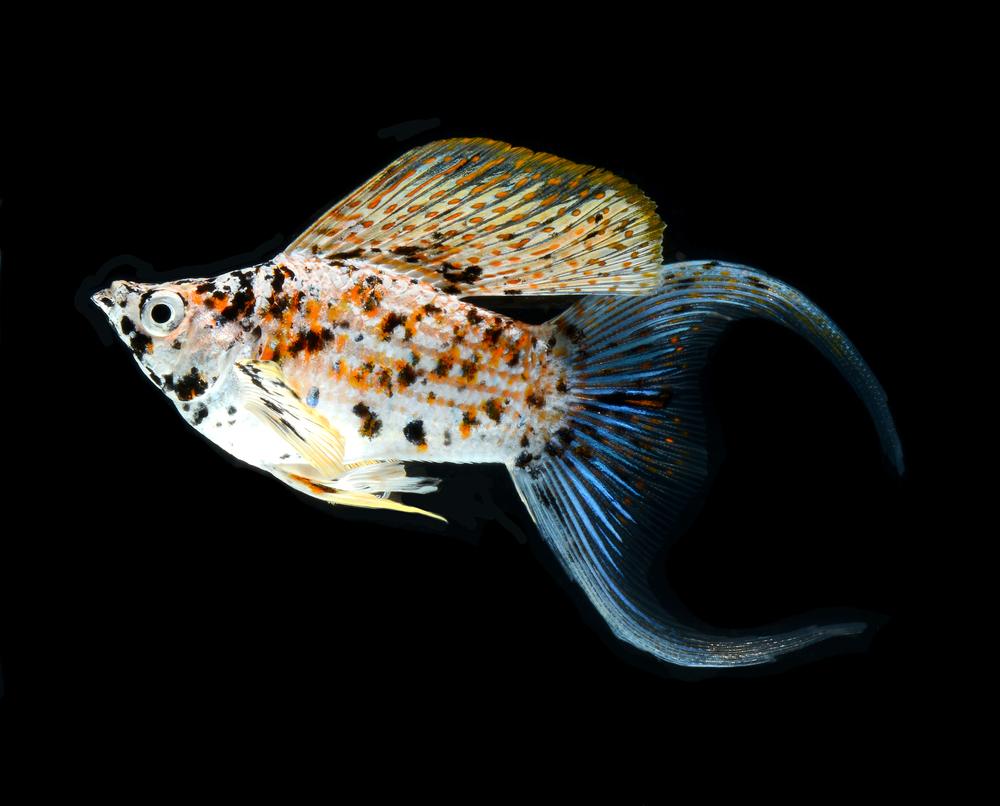
Filtration
Mollies don’t produce a heavy bioload, but they should be provided with filtration that meets the needs of their tank. If your tank is overstocked, aim for a filter that is rated for a tank larger than your tank. Internal filters, hang-on-back filters, and canister filters are all acceptable forms of primary filtration for Mollies.
Things to Know When Owning a Molly
Food & Diet Requirements
Mollies are omnivorous fish, and in the wild, they eat plant matter and small animals, like other fish, crustaceans, and insect larvae. A high-quality community tank food is a good option, and they can also be given guppy-specific food. They like fresh vegetables, and you can offer things like spinach, zucchini, and cucumber. They can also eat treats like bloodworms and baby brine shrimp.
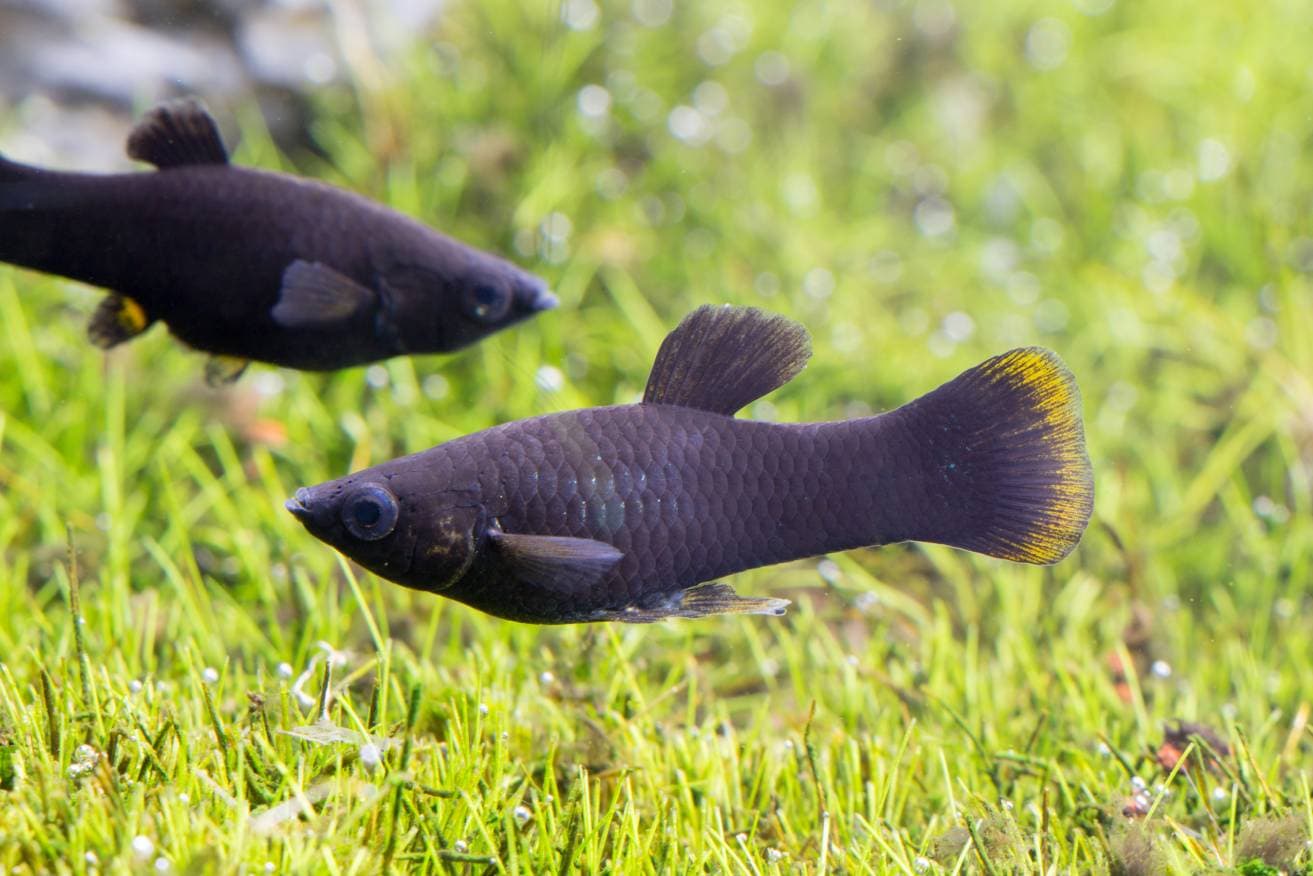
Size & Growth Rate
Mollies are fast growers, usually reaching their full adult size by about 6 months of age. They grow at a rate of about ½–1 inch per month until 4–6 months. Their maximum adult size is usually around 3–5 inches.
Varieties
Lifespan and Health Conditions
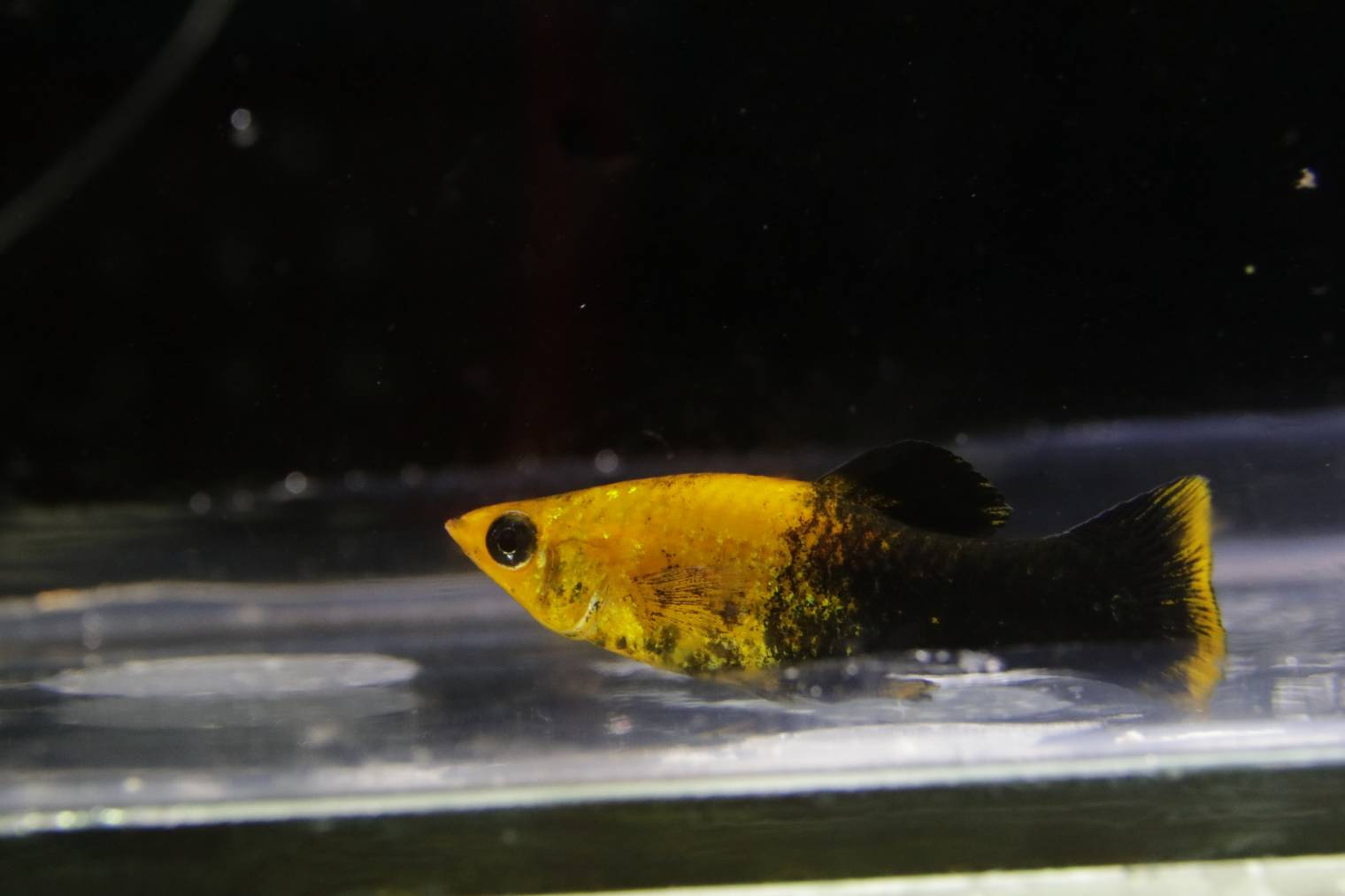
The lifespan of a Mollie is relatively short at 3–5 years. So, it’s best to keep these health conditions in mind to ensure they live the longest life possible.
Male vs Female
Unlike some fish, which have distinct differences in appearance between males and females, male and female Mollies are quite similar in size and appearance. One of the easiest ways to tell the difference between the two is that males tend to have a larger dorsal fin than females, while females tend to have a larger anal fin than males. In some varieties, males may also be more brightly colored and showy.
3 Little-Known Facts About Mollies
1. They Produce Live Young
Although many aquarium fish are egg layers, Mollies are livebearers. This means that they carry young in a similar way to a mammal, then give birth to living, swimming babies. Molly fry are extremely small, and there is a chance of them being eaten by their parents, so make sure to provide hiding places if you’re attempting to successfully breed your Mollies.
2. The Young Raise Themselves
Giving birth to live young doesn’t mean that an animal has any type of instinct to raise those young. Mollies give birth to live fry, then the fry are completely on their own. They are born able to fend for themselves, quickly learning where and how to get food and how to stay safe.
3. They Are Primarily Herbivores
Mollies are technically omnivorous fish, but in the wild, their natural diet leans heavily towards herbivorous. They love to eat algae and plant matter. In a tank, there is a possibility of your Mollies eating live plants, but they also like to eat decaying plant matter and fresh vegetables that are offered to them.
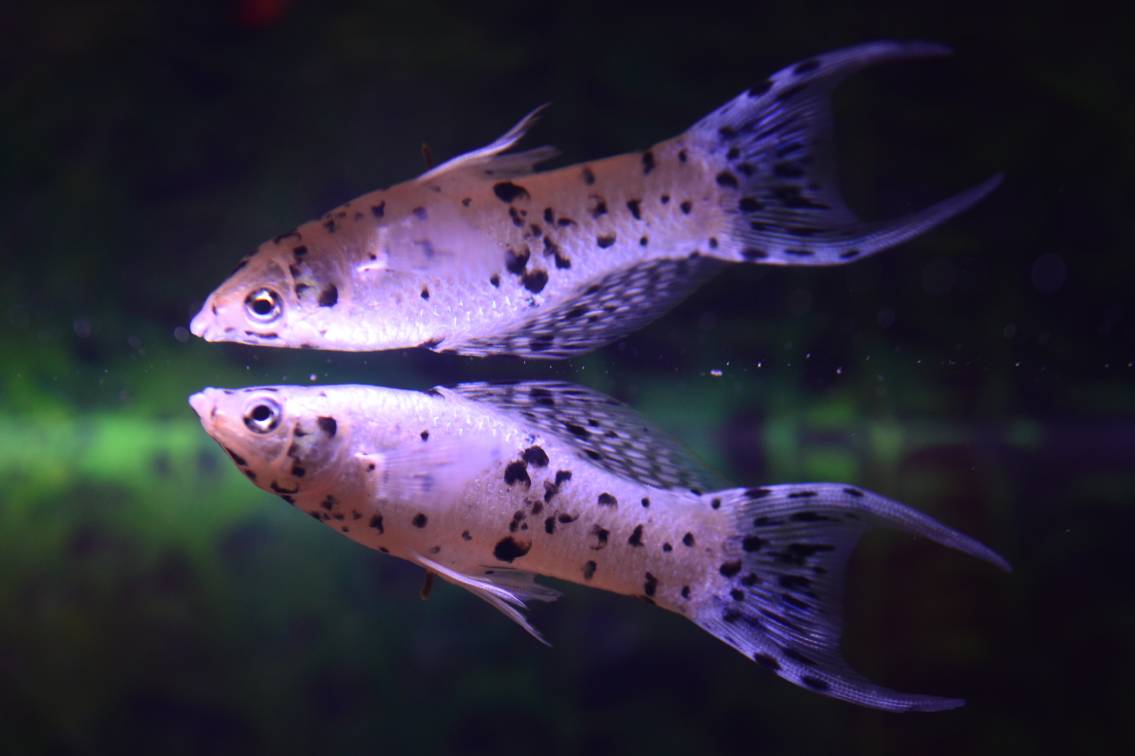
Final Thoughts
Mollies make great additions to many tropical community tanks, although males can show some aggression during breeding time. They come in multiple color, size, and shape varieties, and since these fish are all the same species, they are able to breed with each other. If you have multiple varieties of Mollies in your tank, there is a possibility of crossbreeding between varieties. If you don’t want a constantly reproducing group of fish, aim for an all-female group.
These are hardy fish that are a good option for beginner fish keepers, but they can become sick when exposed to poor water quality. Make sure to provide proper filtration, routine water changes, and a proper temperature and pH, as well as a healthy, varied diet to maintain the health of your Mollies.
Also Read:
Featured Image Credit: Joan Carles Juarez, Shutterstock
 Molly Fish Cost
Molly Fish Cost

